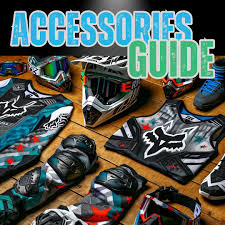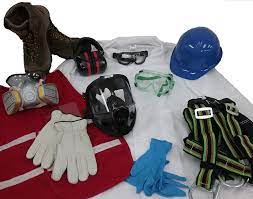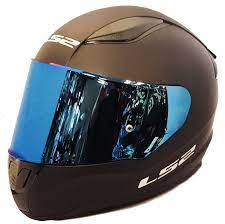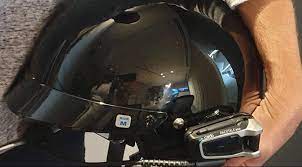Enhancing Your Ride: The Benefits of a Tinted Helmet Visor
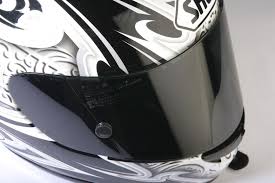
The Benefits of Using a Tinted Helmet Visor for Motorcyclists
Motorcyclists often face various challenges while riding, and one of the common issues is dealing with glare from the sun or bright lights. A tinted helmet visor can be a valuable accessory that not only enhances the rider’s vision but also provides several benefits for a safer and more comfortable riding experience.
Improved Visibility
A tinted helmet visor helps reduce glare from sunlight, making it easier for riders to see clearly in bright conditions. This can enhance visibility on the road, especially during sunrise or sunset when the sun’s rays are most intense. By reducing glare, riders can focus better on their surroundings and potential hazards, improving overall safety.
Eye Protection
Exposure to harmful UV rays can damage the eyes over time. A tinted helmet visor acts as a shield against UV radiation, protecting the rider’s eyes from sun-related damage. Additionally, it helps prevent eye strain caused by excessive brightness, allowing riders to maintain better eye health during long rides.
Enhanced Comfort
Riding with a tinted helmet visor can significantly improve comfort levels for motorcyclists. By reducing glare and filtering out harsh light, riders can enjoy a more relaxed and enjoyable ride without squinting or straining their eyes. This can lead to reduced fatigue and improved concentration on the road.
All-Weather Versatility
A tinted helmet visor is not just beneficial for sunny days; it can also be useful in various weather conditions. It provides protection against wind, dust, and debris while maintaining clear visibility. Whether riding in bright sunlight or overcast skies, a tinted visor offers versatility and adaptability for different riding environments.
Legal Considerations
Before using a tinted helmet visor, riders should be aware of any legal restrictions regarding visibility while riding. Some regions have regulations on the level of tint allowed on visors to ensure adequate visibility for both riders and other road users. It is essential to comply with local laws and choose a tint that meets safety standards.
In conclusion, a tinted helmet visor is a practical accessory that offers numerous benefits for motorcyclists. From improved visibility and eye protection to enhanced comfort and all-weather versatility, using a tinted visor can enhance the overall riding experience while prioritising safety on the road.
Everything You Need to Know About Tinted Helmet Visors: FAQs and Insights
- 1. Are tinted helmet visors legal for use on the road?
- 2. What are the benefits of using a tinted helmet visor?
- 3. Can I use a tinted visor at night?
- 4. How do I clean and maintain a tinted helmet visor?
- 5. Are there different levels of tint available for helmet visors?
- 6. Will a tinted visor affect my visibility in different lighting conditions?
- 7. Can I replace the visor on my existing helmet with a tinted one?
- 8. Do tinted helmet visors provide UV protection for the eyes?
1. Are tinted helmet visors legal for use on the road?
One frequently asked question regarding tinted helmet visors is, “Are tinted helmet visors legal for use on the road?” The legality of tinted helmet visors varies depending on regional regulations. In many areas, there are specific guidelines regarding the level of tint allowed on visors to ensure adequate visibility for riders and other road users. It is crucial for motorcyclists to familiarise themselves with local laws and restrictions related to tinted visors to ensure compliance with safety standards while enjoying the benefits of reduced glare and enhanced eye protection during their rides.
2. What are the benefits of using a tinted helmet visor?
When considering the benefits of using a tinted helmet visor, it’s essential to understand how this accessory can enhance a motorcyclist’s riding experience. A tinted helmet visor provides improved visibility by reducing glare from sunlight, ensuring clearer vision in bright conditions and enhancing safety on the road. Additionally, it offers protection against harmful UV rays, safeguarding the rider’s eyes from sun-related damage and reducing eye strain. The tinted visor also enhances comfort by filtering out harsh light, leading to a more relaxed and enjoyable ride with reduced fatigue. Overall, the benefits of using a tinted helmet visor extend beyond visibility enhancement to include eye protection, comfort improvement, and all-weather versatility for motorcyclists.
3. Can I use a tinted visor at night?
Using a tinted visor at night is not recommended due to reduced visibility in low-light conditions. Tinted visors are designed to reduce glare from sunlight and bright lights during the day, which can hinder vision in the dark. It is crucial for motorcyclists to have clear visibility at night to effectively spot hazards and navigate safely on the road. Therefore, it is advisable to switch to a clear visor or use additional lighting when riding at night to ensure optimal visibility and safety.
4. How do I clean and maintain a tinted helmet visor?
Maintaining a tinted helmet visor is crucial for ensuring clear visibility and extending its lifespan. To clean a tinted visor, start by gently rinsing off any loose dirt or debris with lukewarm water. Avoid using harsh chemicals or abrasive materials that could scratch the tinted surface. Use a soft microfiber cloth or sponge to wipe the visor in a gentle, circular motion to remove any stubborn residue. For stubborn dirt or bugs, consider using a mild soap solution and avoid excessive rubbing. Once cleaned, allow the visor to air dry or use a clean, dry cloth to pat it dry gently. Regularly inspect the visor for any signs of damage or wear and store it in a protective case when not in use to prevent scratches. By following these simple maintenance steps, riders can keep their tinted helmet visor in optimal condition for safe and enjoyable rides.
5. Are there different levels of tint available for helmet visors?
When it comes to tinted helmet visors, riders often wonder about the availability of different levels of tint. Yes, there are indeed various levels of tint available for helmet visors to cater to different preferences and lighting conditions. Riders can choose from light tints for subtle glare reduction to darker tints for enhanced sun protection and privacy. It’s essential for riders to select a tint level that suits their riding environment while ensuring visibility and compliance with local regulations. By understanding the options available, riders can make an informed choice that enhances both safety and comfort on the road.
6. Will a tinted visor affect my visibility in different lighting conditions?
One common concern motorcyclists have regarding tinted helmet visors is whether they will impact visibility in various lighting conditions. The answer to this question depends on the level of tint and the specific conditions in which the visor is used. A moderately tinted visor can help reduce glare from bright sunlight, improving visibility in sunny conditions. However, riders may experience reduced visibility in low-light situations or at night when using a heavily tinted visor. It is essential for riders to choose a tint level that balances sun protection with visibility, considering the lighting conditions they typically ride in to ensure optimal safety on the road.
7. Can I replace the visor on my existing helmet with a tinted one?
Yes, in most cases, you can replace the visor on your existing helmet with a tinted one. Many helmet manufacturers offer tinted visors as accessories that are compatible with their helmet models. It is essential to ensure that the tinted visor you choose is specifically designed for your helmet make and model to ensure a proper fit and functionality. Before replacing the visor, carefully follow the manufacturer’s instructions for removing and installing visors to maintain the integrity and safety of your helmet. Additionally, be mindful of any legal regulations regarding tinted visors in your region to ensure compliance while riding on the road.
8. Do tinted helmet visors provide UV protection for the eyes?
One of the frequently asked questions regarding tinted helmet visors is whether they provide UV protection for the eyes. Tinted helmet visors indeed offer UV protection, acting as a shield against harmful ultraviolet rays that can damage the eyes over time. By reducing exposure to UV radiation, tinted visors help safeguard the rider’s eyes from sun-related harm, promoting better eye health and ensuring a safer riding experience under sunny conditions. Riders can benefit from both enhanced visibility and eye protection by using tinted helmet visors while enjoying their motorcycle journeys.

